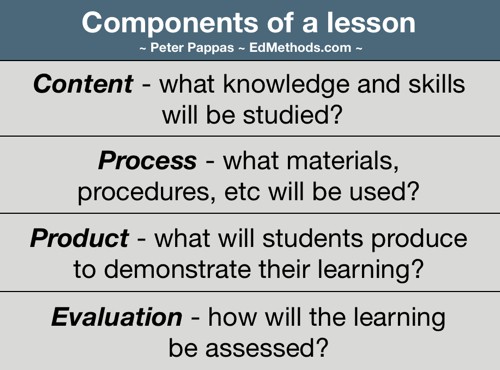Working as individuals or in 2 person teams, students will design a DBQ question suitable for inclusion of our DBQ iBook (available at iTunes).
See Class 4 for recommendations for DBQs and Teaching with Documents.
I’ve posted some recommendations for best websites for finding primary documents.
American History | World History
This extended assignment meets two of our course requirements as noted in the syllabus (146 KB pdf)
#1: Resources Assignment
#5: iBook showcase
The DBQ Design Assignment will be accomplished in 3 phases:
Step 1: Develop a proposal which will be submitted for peer review.
You should be prepared to deliver a 2 min pitch to class. (not a written assignment to be turned in)
Due date: 9/23.
Then we did a bit of “speed dating” of our ideas for the DBQ Assignment. Students formed two lines and had 2 minutes to pitch their DBQ design idea to each other and share some feedback. Then one line shifted and we repeated the pitch exchange. In all students pitched their idea three times.
The goal of this phase is to gather feedback from peers regarding the following:
- You have an interesting generative / essential question worth answering.
- Your initial appraisal indicates there are suitable documents available. (Documents could be multimedia).
- You have an idea for how students will use your DBQ to build Common Core skills. “What does it say, how does it say it, what’s it mean to me?”
Step 2: Following class feedback on 9/23. Student should send a brief description (via email) of their proposed DBQ to the instructor by Sat 9/28. He will give you feedback when we meet on 9/30 at the Nikkei Center.
Step 3: Students will share their revised idea as a blog post here at EdMethods by Sat Oct 5th. It should explain how you intend to address the 3 questions above. Students are expected to review and comment on at least two of their peers ideas by Sat Oct 12th.
Step 4: Students will open an account at Learnist and use the site to post their DBQ.
Due date: Oct 26
Learnist is a web-based curation site with built in social media tools – it can collect and comment on videos, blogs, books, docs, images or anything on the web.
Your Learnist board should be tightly focused on documents that help students answer the DBQ’s generative question. Each document should include one or two scaffolding questions which help the student to use the documents to answer the DBQ’s generative question.
For a sample of a Learnist board see your instructor’s Incarceration of Japanese Americans During WWII
Your peers will be able to make comments after each document on your Learnist board to help you focus the DBQ. Since Learnist is open to the public, you can expect that others outside our class may comment as well.
Phase 3: Students will finalize their DBQs for inclusion in our iBook showcase.
Details here.
Image Credit “Damn the Zeppelins”
George Eastman House Collection
Accession Number: 1973:0126:0026
Maker: L’AT D’ART PHOT.-Bois-Colombes
Date: ca. 1915
Medium: gelatin silver print, hand applied color
Dimensions: Overall: 8.7 x 13.6 cm


